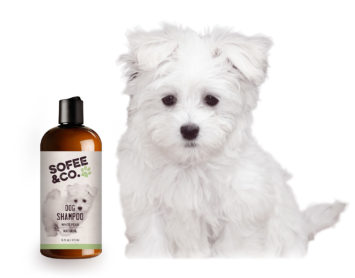With their striking, wolf-like appearance, friendly disposition, and remarkable endurance and strength, Alaskan Malamutes make appealing companions for many. Malamutes have also been cross-bred with multiple breeds, including Siberian huskies, German Shepherds, golden retrievers, and labrador retrievers, to create hybrids with various characteristics and personalities. Read on to discover more about these fluffy, loving dogs, including their history, care, disposition, and more!
All you need to know about Alaskan Malamute mixes
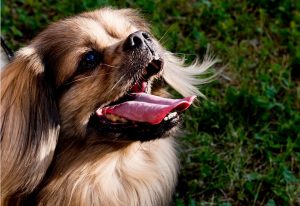
Alaskan malamutes have been mixed with multiple other breeds throughout the years to form hybrid dogs. Some of the more popular malamute hybrids include the malamute/German Shepherd mix, known as the Alaskan Shepherd, the malamute/Siberian husky mix, known as the Alusky, the malamute/Golden retriever mix, known as the Alaskan Goldenmute, Alaskan Golden, or simply Goldenmute, and the malamute/labrador retriever mix, known as the Alaskan Malador. These breed mixes have come about for multiple reasons related to both health and other characteristics. Aluskies have been used for carting, sled pulling, and hauling loads. The Goldenmute likely originated in the mid-1800s in North America. Alaskan Shepherds likely date back to the early 1900’s, also bred to pull sleds and carry packages, but additionally for hunting and guarding purposes.
The life expectancy, size, and appearance of an Alaskan malamute mix can vary according to the breed that the malamute is mixed with, but generally, these will be medium- to large-sized dogs. Life expectancy for a malamute/malamute mix is usually in the 10-13 year range, although some may live up to 15 years. A female malamute usually weighs around 75lbs and stands 23” tall, while males weigh in at 85lbs and stand 25” tall. Some males may weigh up to 100lbs, and females under 75lbs. Alaskan Shepherds fall into a larger range, at 65-130lbs, and 21-28” tall. Goldenmutes and Alaskan Maladors tend to be towards the malamute’s smaller range, at 60-75lbs and 22-24”, while Aluskies can fall between 45-100lbs, and 20-28”.
Some malamute mixes are recognized by hybrid breed organizations. The Alaskan Shepherd is recognized by the Designer Breed Registry (DBR), and the International Designer Canine Registry (IDCR). The Alusky is also recognized by those organizations, as well as the American Canine Hybrid Club (ACHC), the Designer Dogs Kennel Club (DDKC), and the Dog Registry of America, Inc (DRA).
Health and Care
While hybrid dogs are thought to possibly be able to avoid some of the health problems common to their parent breeds, Alaskan malamute mixes can still inherit some of them. Some health problems common to malamutes include musculoskeletal issues such as hip and elbow dysplasias, eye disorders such as hereditary cataracts and heremalopia (day blindness), epilepsy/seizure disorders, osteochondrodysplasia, kidney issues, skin disorders, congenital heart problems, inherited polyneuropathy (a lack of coordination/instability), cerebellar hypoplasia, diabetes, thyroid issues, and zinc deficiency. Alaskan Shepherds and Aluskies may also have issues with cartilaginous exotosis, a bone illness related to calcium buildup, obesity, degenerative myelopathy, and von Willebrand disease, which results in excess blood loss.
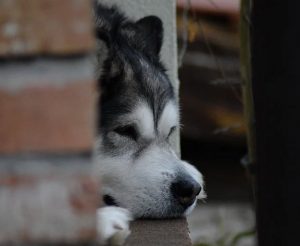
Some steps can be taken to optimize a malamute mix’s health. Teeth should be brushed 2-3x/week, and nails trimmed about 1-2x/month, or when they can be heard clicking on hard floors. Some recommended tests for a malamute mix that can prevent or catch issues early include elbow and hip exams, ophthalmologist exams, and DNA tests that look for polyneuropathy. Spaying or neutering is also recommended for any dog in order to prevent unwanted litters, decrease certain behaviors such as marking and aggression, and potentially improve lifespan.
Essential Products and Grooming Accessories
Malamute mixes will also need collars, leashes, harnesses, and other supplies. Collars are needed to attach identification tags. A properly fitted collar allows for two fingers to be slid between the collar and the dog’s neck. The malamute is a strong, sturdy dog that was bred for heavy pulling, so a quality harness that is well-constructed from durable materials such as reinforced nylon or leather, with steel or metal buckles and leash attachments, is recommended for exercise. Malamutes (and Aluskies) love having a job to do when exercising, so a dog backpack could be another consideration. Dog backpacks should have padded straps and be made of breathable, waterproof fabrics for maximum comfort. Malamute mixes should also have durable leashes, again made of materials such as nylon or leather. Bungee combination leashes or leashes with padded handles (which both can lessen shock for the owner and dog) may also be good choices.
FAQs
Are malamute mixes good with children and other pets? Are they family-friendly?
Are you a good match for a malamute mix?
Malamute mixes are dogs that will require lots of open space and exercise, and therefore are not good for apartment-dwellers or sedentary individuals. Their notorious digging habits mean a sturdy, buried fence is required. Malamutes were originally bred in the Arctic, and their thick coats are better suited to cooler climates. Malamute mixes are intelligent and friendly, but also headstrong and stubborn, so they are better for experienced dog owners.
Pros and cons of getting a malamute mix
Some cons of a malamute mix include its strong, stubborn, independent streak (especially when mixed with a German Shepherd or husky), high demands for space and physical/mental stimulation, and, in the case of Alaskan Shepherds, propensity towards overeating/obesity. Pros, on the other hand, include loyalty to families, friendliness, and companionship.
Temperament and Personality
The Basics of Grooming
Malamutes have a double coat, consisting of a thick, coarse outer coat that’s about an inch long, and a long, woolly, dense undercoat of about two inches in length that guards against cold and wetness. The breeds they are commonly mixed with (German Shepherds, huskies, golden retrievers, labrador retrievers) also have full double coats, so malamute mixes will more than likely be heavy shedders, and are not hypoallergenic dogs. Grooming requirements include brushing anywhere from weekly to daily, depending upon the time of year-malamutes fully shed their undercoats twice a year, over a period of about three weeks. Brushing keeps the dog’s coat clean, stimulates and distributes oil production evenly, improves blood circulation, removes knots and tangles, and removes loose hair and debris.
Misting the dog’s coat with water prior to brushing can help prevent loose hair. A slicker brush or undercoat rake is recommended in order to fully get through the dog’s coat to its skin and remove debris and loose hair. Slicker brushes (vs pin brushes) also keep the dog shinier, and are more productive at promoting skin oil production. Some dogs may need to be desensitized to grooming, starting by alternating between using one’s hands and a brush through the dog’s fur. Otherwise, malamutes are usually odorless dogs and are fastidious about keeping their coats clean, a trait also seen in huskies, so baths are rarely needed-perhaps as little as 1-2x/year, but never more frequently than every 6-8 weeks (with anti-shedding shampoos recommended).
Top Tips for Finding a Malamute Mix
Malamute mix puppies can also be found through breeders. Expect to pay $800+ for Alaskan Shepherd puppies, and $1000+ for Aluskies. Malamute mix puppies can sometimes be found through breeders of their parent breeds (malamutes, German Shepherds, huskies, etc). Responsible breeders should meet with potential buyers in person and allow them to see where the puppies are raised, and meet parent dogs. Parent dog veterinary and health records should be provided, and written contracts made as well.
Overall, the estimated cost of dog ownership range from $150/month, according to Rover, to $400-800/year, according to the ASPCA and AKC, with some estimates up to $90,000 by Forbes magazine, accounting for emergency veterinary costs. Normal costs of dog ownership include food, supplies, veterinary checkups and vaccinations, flea, tick, and heartworm preventatives, toys, and boarding.
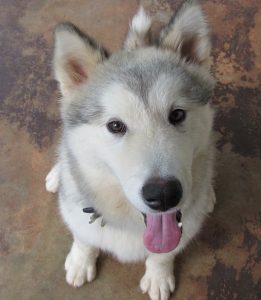
Training and Exercising your Malamute Mix
Malamutes and their common mixes are intelligent dogs, but can be stubborn and headstrong with independent streaks, meaning that they will need a strong, firm leader and consistency when it comes to training. Malamutes can have a tendency to want to be dominant in households, meaning that all family members need to be on board with establishing boundaries. Malamutes and malamute mixes do best with jobs to do, otherwise they can become hard to handle. But, thanks to their intelligence, malamute mixes are usually easy to housetrain. Some training tips include keeping sessions short to maintain the dog’s interest, using basic, concise commands, and using positive, rewards-based training methods, with plenty of treats and verbal encouragement.
How to Feed and Dietary Requirements/Restrictions of Malamute Mixes
Malamute mixes should be fed high-quality food, with high nutritional value and few fillers. They should be given large breed formulations that meet their energy and exercise needs, which can change with life stage. Feeding amounts can fall between 2-5 cups/day, spread out over 2-3 meals, depending on the specific mix, its size, and its activity levels. One note is that Alaskan Shepherds can have a tendency to overeat and become overweight, so care should be taken to not overfeed.
Popular Names for Malamutes and Malamute Mixes
Some popular names for malamutes and malamute mixes include Loki, Zeus, Bear, Kodiak, Odin, Nanook, Rocky, and Thor for males, and Nala, Koda, Luna, Maya, Bella, Bailey, Athena, and Aurora for females.
Summary
Other Similar or Comparable Dog Breeds
Other breeds similar to Alaskan malamute mixes include Bernese Mountain Dogs, Labrador retrievers, Siberian huskies, German Shepherd/husky mixes, Rhodesian ridgebacks, and Alaskan huskies.
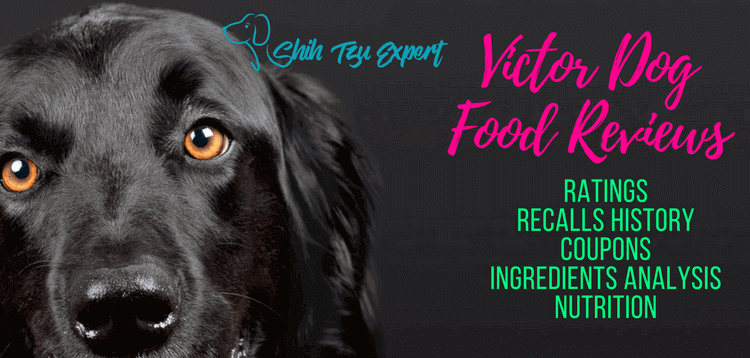
![Shih tzu mixed breeds [Which Shih Tzu Cross Breed is Right for You?] Shih tzu mixed breeds [Which Shih Tzu Cross Breed is Right for You?]](https://shihtzuexpert.com/wp-content/uploads/2020/06/Shih-tzu-mixed-breeds.jpg)
![Shih Tzu Poodle mix [Your complete guide to Teddy bear dog | Shih Poo | Shoodle or Pooshi] Shih Tzu Poodle mix [Your complete guide to Teddy bear dog | Shih Poo | Shoodle or Pooshi]](https://shihtzuexpert.com/wp-content/uploads/2020/06/Are-You-a-Good-Match-for-a-Shih-Poo.jpg)

